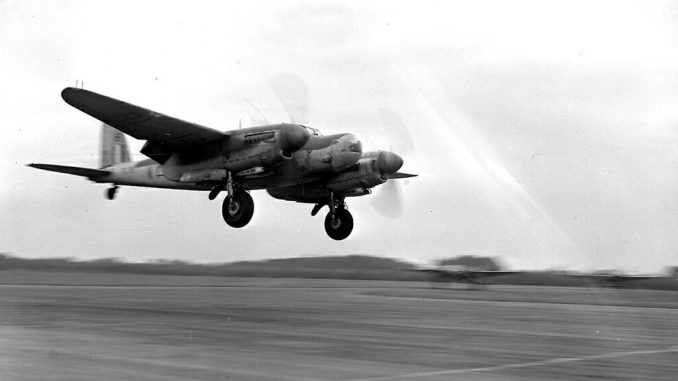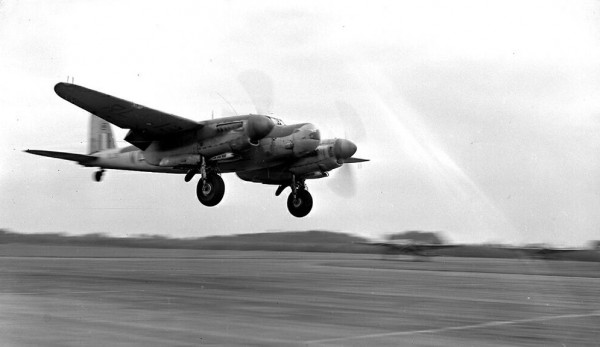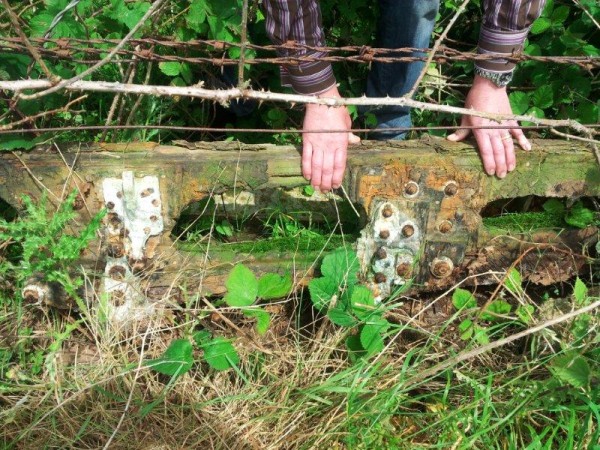

A group of enthusiasts in the UK has brought together a committed effort to build and fly a deHavilland Mosquito. Known as “The People’s Mosquito” the team has sourced the remains of a Mosquito NF.36, serial number RL249, upon which they will base the identity of their aircraft. While some of our readers may be aware of this project, Warbirds News believes in spreading the word as widely as possible to help worthwhile warbird restoration endeavors such as this.
RL249 was a night fighter Mosquito variant with an American-made Mk.X radar, and one of the very last Mosquitos to come off British production lines for Royal Air Force service. She crashed shortly after takeoff from RAF Coltishall following double engine failure on February 14th, 1949. Her pilot, ’Dickie’ Colbourne managed to put her down in a stand of small trees within the airfield perimeter, but the wrecked Mosquito caught fire with he and his navigator, Sgt.W.B. Kirby, still trapped inside. Colbourne, severely dazed and with his clothing on fire, managed to free himself from the cockpit. He immediately doused the flames on his flying suit, but then realized that Kirby remained stuck inside the aircraft’s nose. He re-entered the blazing Mosquito to rescue his navigator, suffering severe burns in the process. By this point, the fire and rescue team had arrived, but Colbourne refused to get into the ambulance until he was sure Kirby was getting proper attention. Both men made it to the hospital alive, but in grave condition. Sadly Kirby died about twenty hours later. Colbourne survived, and his monarch awarded him the George Medal for gallantry; the second highest award for extreme bravery outside of combat for members of the military and civilians in the United Kingdom.

Following many months of recuperation in hospital, Colbourne eventually returned to flying status. He continued to serve in the Royal Air Force until retirement in 1975. He died in 2005 at the age of 85.
Colbourne’s aircraft, RL249 wasn’t quite so lucky. The remains were hauled over to the perimeter track. Mechanics retrieved parts of it for reuse, but the bulk of the airframe stayed where it was, occasionally serving as a training aid in fire practice. The RAF extended Coltishall’s runway in the 1960s, and this led to a base cleanup. RL249’s remains were again burned, and then folded back into the earth, presumably never to be seen again. However, in 2006 she was rediscovered, and her bones collected for preservation.

The People’s Mosquito, after protracted negotiations, recently acquired RL249 as the basis and identity for their restoration project. Her parts are currently in storage, and while they could never be used in a flying aircraft, they will serve as a useful template during the rebuild. TPM have of course been in contact with the various main players around the world involved with Mosquito aircraft restoration, and have developed a comprehensive business plan to support their efforts. They are now ramping up for a full-scale push to fund the project, and have laid the foundations for a strong organization, capable of returning a Mosquito to flight in the United Kingdom.
For more information, and to learn how you can help with this worthy project, please visit the following address.



peoples mosquito restoration
Having worked in the aviation industry what you claim to work with is an extremely bold venture, the Mary Rose had more potential.
The industrial prowess of the UK today is floundering backed up through parliament and daily news, if this venture as much as roles on a hard standing it will be an absolute miracle most will not see in their lifetime
Brace, Brace, Brace.
Per ardua ad astra!